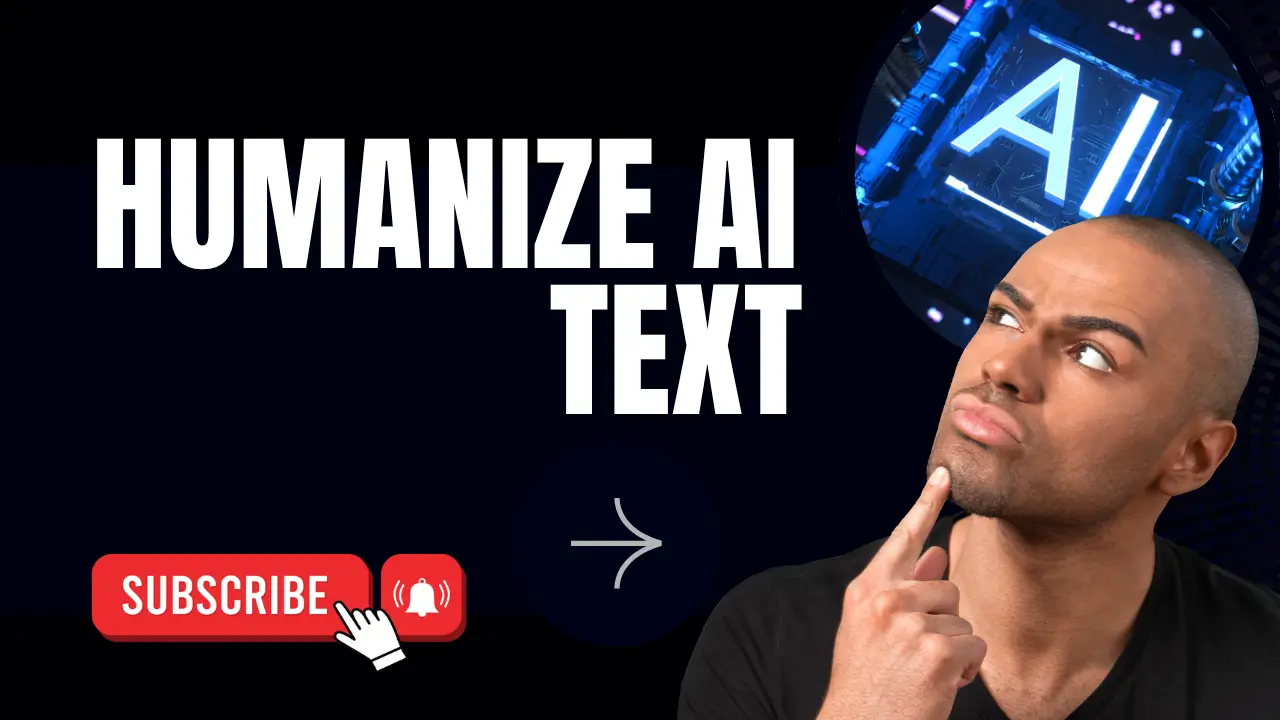How to Humanize AI Text: Make AI Writing Sound Real (Without Losing SEO)
Most people believe AI text will always sound robotic — stiff sentences, weird phrasing, and no emotion. But that’s not true.
With the right approach, tools, and tone, you can humanize AI text so it feels natural, relatable, and ready to rank on Google.
Let’s break it down simply. 👇

1. What Does “Humanizing AI Text” Really Mean?
To humanize ai text means taking machine-generated writing and making it sound like a real person wrote it — friendly, emotional, and easy to understand.
Instead of dull robotic lines like:
“AI tools help you create content efficiently.”
You make it sound natural:
“AI tools can actually save you hours — but only if your writing still sounds like you.”
That’s humanizing — it’s about emotion, flow, and tone.
2. Why It Matters
Google doesn’t rank robotic content anymore. It ranks helpful, people-first writing.
Even if you use humanize ai text, you need to sound human so readers stay engaged — and so Google knows your post offers real value.
humanize ai text
✅ Boosts trust and authenticity
✅ Keeps readers hooked
✅ Passes AI detection tools
✅ Improves SEO ranking
3. How to humanize ai text Naturally
Here’s a simple process anyone can follow:
1️⃣ Use contractions – “you’ll,” “they’re,” “it’s.”
2️⃣ Add transitions – words like so, but, because, honestly.
3️⃣ Vary sentence length – mix short and medium sentences.
4️⃣ Include personal touches – real examples or relatable lines.
5️⃣ Read it aloud – if it doesn’t sound natural, fix it.
This turns any stiff humanize ai text into something lively and readable.
4. Brands That Nail It
- HubSpot makes AI blogs sound personal by editing tone and flow.
- Netflix uses AI for descriptions but adds human approval for personality.
- Copy.ai teaches users to rewrite AI drafts using contractions and rhythm.
- Medium writers use AI outlines, then rewrite manually for warmth.
- ToolGenie AI helps instantly humanize tone and fix robotic structure.
These brands show that real connection always comes from blending AI + human touch.
5. Mistakes to Avoid
When you’re trying to humanize AI text, don’t fall into these traps:
🚫 Overdoing slang or humor
🚫 Forgetting your brand voice
🚫 Removing structure during editing
🚫 Ignoring SEO keywords
🚫 Publishing AI text without checking tone
Keep it balanced — warm, readable, and optimized.
6. Best Tools to Humanize AI Text
Here are the top tools that make AI writing sound real:
🧠 ToolGenie AI: Instantly humanizes AI tone for SEO blogs.
✍️ QuillBot: Rewrites robotic phrasing naturally.

✅ Grammarly: Detects awkward tone and improves clarity.

💡 Hemingway App: Simplifies complex sentences.
🔍 Originality.ai: Checks if your text sounds human.
Combine tools like ToolGenie + Grammarly + Hemingway for best results.
7. Future of Humanized AI Text
The future isn’t “AI vs Humans” — it’s AI + Humans working together.
AI gives speed. Humans give emotion.
Together, they create the kind of content Google loves — authentic, helpful, and engaging.
Soon, we’ll see content that’s entirely AI-generated but feels human from the first line to the last.
Conclusion: Let AI Write, But Let Humans Connect
AI can write words — but it can’t feel emotions.
That’s your role.
When you humanize AI text, you’re turning machine output into a real conversation — one that builds trust and keeps readers coming back.
So before you hit publish, take a minute to polish your AI draft. Add tone. Add emotion. Make it you.
Because in the end, Google may rank your post — but people decide if it’s worth reading. 💬
AI’s Role in E-commerce
Personalization: Tailored Shopping for Every User
AI Chatbots and Customer Service
They handle common queries instantly — order tracking, returns, or payment issues — reducing response times and freeing up human agents for complex issues.
What are some examples of AI in online shopping?
Is AI expensive for small e-commerce businesses?
How is AI used in e-commerce today?
Does AI help with SEO for e-commerce websites?
How can AI improve customer support in e-commerce?
What are some popular AI tools for e-commerce?
How does AI help with fraud detection in online stores?
If you’re curious how AI is doing more than just powering smart shopping — ever wonder how it’s changing finance and investment too? Check out this in-depth take on AI in finance and investment and see how automation is rewriting the money game





Really love how you engage with 💎 your community in such authentic meaningful ways